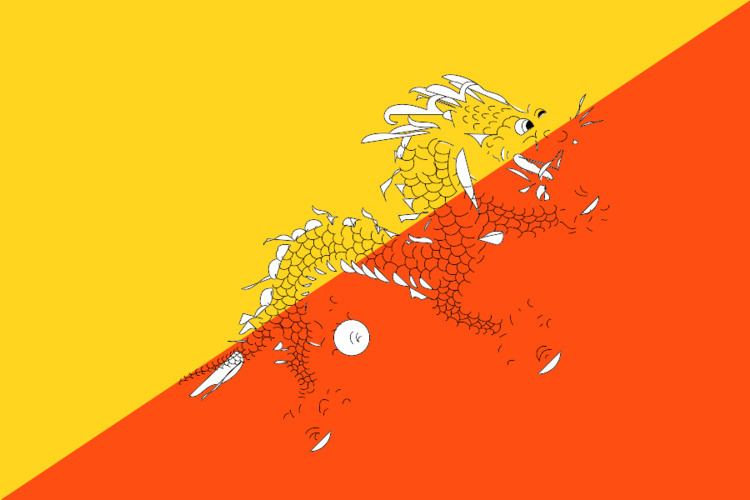Fiscal year 1 Jan – 31 December Inflation (CPI) 9.6% (2014 est.) Gross domestic product 1.781 billion USD (2013) GNI per capita 6,920 PPP dollars (2013) | Trade organizations SAFTA GDP per capita 2,362.58 USD (2013) GDP growth rate 2.0% annual change (2013) | |
 | ||
GDP rank 168th (nominal) / 148th (PPP) GDP by sector agriculture: 14.4%, industry: 41.6%, services: 44% (2014) Gross national income 5.219 billion PPP dollars (2013) Internet users 29.9% of the population (2013) Currencies Bhutanese ngultrum, Indian rupee | ||
The economy of Bhutan, one of the world's smallest and least developed countries, is based on agriculture and forestry, which provide the main livelihood for more than 60% of the population. Agriculture consists largely of subsistence farming and animal husbandry. Rugged mountains dominate the terrain and make the building of roads and other infrastructure difficult and expensive.
Contents
Map of Bhutan
The economy is closely aligned with India's through strong trade and monetary links and dependence on India's financial assistance. Most production in the industrial sector is of the cottage industry type. Most development projects, such as road construction, rely on Indian migrant labour. Model education, social, and environment programs are underway with support from multilateral development organisations.
Each economic program takes into account the government's desire to protect the country's environment and cultural traditions. For example, the government, in its cautious expansion of the tourist sector, encourages visits by upscale, environmentally conscientious tourists. Detailed controls and uncertain policies in areas such as industrial licensing, trade, labour, and finance continue to hamper foreign investment. Hydropower exports to India have boosted Bhutan's overall growth, even though GDP fell in 2008 as a result of a slowdown in India, its predominant export market.
Macro-economic trend
This is a chart of trend of gross domestic product of Bhutan at market prices [1] by the International Monetary Fund:
Bhutan's hydropower potential and its attraction for tourists are key resources. The Bhutanese Government has made some progress in expanding the nation's productive base and improving social welfare. Model education, social, and environment programs in Bhutan are underway with support from multilateral development organisations. Each economic program takes into account the government's desire to protect the country's environment and cultural traditions. For example, the government, in its cautious expansion of the tourist sector, encourages visits by upscale, environmentally conscientious tourists. Detailed controls and uncertain policies in such areas as industrial licensing, trade, labour, and finance continue to hamper foreign investment.
In 2004, Bhutan became the first country in the world to ban smoking and the selling of tobacco.
Other statistics
Industrial production growth rate: 9.3% (1996 est.)
Electricity:
Electricity – production by source:
Oil:
Agriculture – products: rice, corn, root crops, citrus, foodgrains, dairy products, eggs
Currency: 1 ngultrum (BTN) = 100 chetrum; Indian rupee (INR)
Historic exchange rates:
